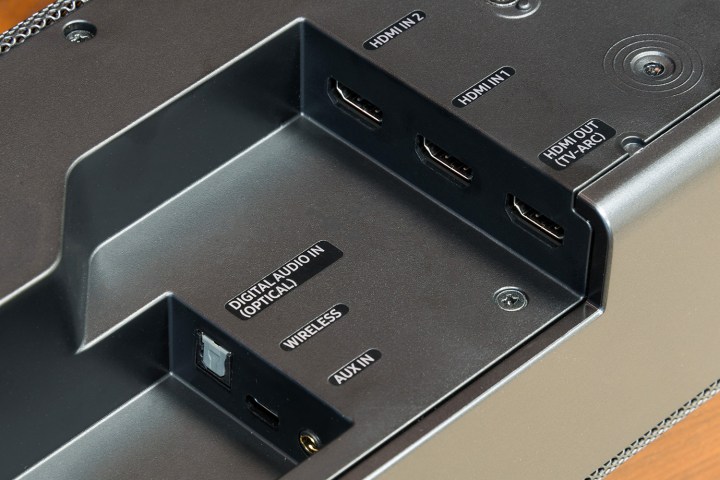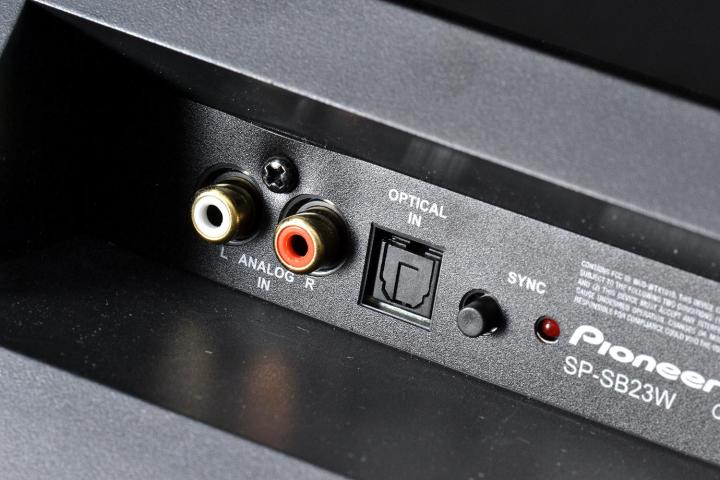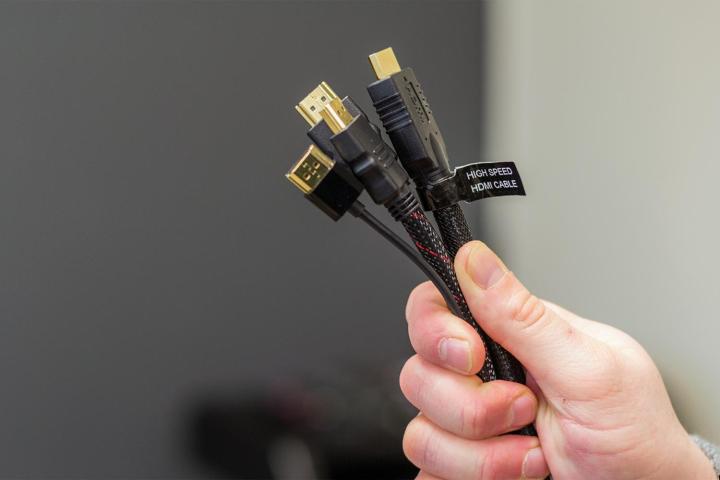Soundbars have become hugely popular thanks to their ability to quickly, easily — and in many cases, affordably — improve your TV’s sound. In general, connecting a soundbar to your TV is quick and painless: Plug the soundbar into the TV using a cable that came in the box, and then plug the soundbar into a power outlet. If all goes well, just turn both devices on and you’ll be listening to great TV sound and music in moments.
But before you rush out and buy one of the best soundbars for your TV, let’s take a closer look at how soundbars and TVs talk to each other. Soundbars are simpler to set up than dedicated A/V receivers and speakers, but there are still several options depending on your TV, your soundbar, and your room. Here’s what you need to know.
Connection types: Wired or wireless

Soundbars connect to TVs using a wired connection. The two major types of wired connections are HDMI and optical. We’ll dig into these in a moment.
Why a wired connection instead of wireless? For now, a wired connection still provides the best possible audio quality, synchronization (so what you hear matches what you see), and reliability.
But wireless connections are beginning to emerge. At CES 2021, TCL announced the Alto R1, the first soundbar that needs only a single cable for power and then uses a wireless link to connect to a compatible Roku TV.
A wireless connection has an obvious advantage: If you don’t need to run a cable from the soundbar to the TV, you can achieve a cleaner look and it gives you more flexibility in terms of placement and mounting options.
But TCL still hasn’t announced a price or release date for the Alto R1, and we don’t yet know if there are any limitations to Roku’s Wi-Fi-based wireless connection.
What about Bluetooth?

You may have seen that a lot of soundbars support Bluetooth, and now you’re wondering if it’s possible to connect your soundbar to your TV in the same way that you can connect your smartphone to a Bluetooth speaker.
The short answer is yes, you can, but your ability to do so will depend on your TV’s capabilities. Some TVs support Bluetooth audio connections and some don’t. But even if your TV supports Bluetooth, here are a few reasons you should avoid this kind of connection from a TV to a soundbar.
Convenience: Most wired connections create a power trigger between the TV and the soundbar. Turning on the TV causes the soundbar to power on, and in some cases, this works in the other direction too. But with Bluetooth, that power trigger doesn’t exist. You’ll have to power on each device separately and then wait for them to connect. And that assumes that your TV and soundbar can be set to reconnect via Bluetooth as soon as they’re powered on, which they may simply not be designed to do.
Sound quality: Bluetooth may be just fine for two-channel stereo, but it was never intended for multichannel formats like Dolby 5.1, DTS:X, or Dolby Atmos. Even if your soundbar only has two channels, you’ll be restricting what it can do with those channels if you connect to your TV using Bluetooth.
If your TV supports Bluetooth, consider reserving that function for connecting Bluetooth headphones or earbuds. If your soundbar supports it, think of it as a convenient way to stream music from your smartphone or other Bluetooth devices.
HDMI: ARC or eARC

High Definition Multimedia Interface, or HDMI as most of us know it, has become the de facto single-cable solution for passing digital audio and video between devices like cable boxes, Blu-ray players, gaming consoles, and TVs. Most TVs will have anywhere from one to four HDMI inputs and you’re probably already using one or more on your TV. But newer TVs also support something called HDMI ARC or HDMI eARC.
ARC stands for Audio Return Channel and eARC stands for enhanced Audio Return Channel. Both of these connections give TVs the ability to receive audio and video via an HDMI port while using that same port to output just audio.
We have a full HDMI ARC/eARC explainer that gets into all of the details, but here’s the bottom line: An HDMI connection (whether ARC or eARC) is the preferred way to connect a soundbar to a TV because it guarantees that your soundbar will receive the highest quality audio signal that it is capable of receiving. It also lets your TV remote control some of your soundbar’s settings like volume and mute — handy if you want to reduce clutter.
The only caveat is that if you have a lot of devices connected to your TV, using one of those HDMI ports for your soundbar means one less port for your other gadgets. There are two ways around this. Some soundbars come with their own HDMI inputs. You can use these as alternatives to your TV’s inputs, but you’ll have to remember which devices are connected to the soundbar and which are connected to the TV so you can select the appropriate input when you start watching.
The other way is to buy a separate HDMI switcher. A switcher converts a single HDMI input on your TV to multiple HDMI inputs (from just two to more than ten depending on the switcher). But as with the inputs on the soundbar, you’ll need to remember which devices are plugged into which ports on the switcher and control it manually or via a remote.
Optical connections

If your TV doesn’t have HDMI ARC/eARC, or you really dislike the idea of giving up an HDMI port for the sake of connecting a soundbar, an optical connection is your best bet.
Optical ports (also known as TOSLink or S/PDIF) provide a one-way digital audio connection between your TV and a soundbar. The quality is excellent, but optical ports are limited to certain kinds of audio content.
Optical connections can handle two-channel stereo and up to 5.1 channels of Dolby Digital sound. But they can’t accommodate the greater bandwidth requirements of formats like Dolby Digital Plus, Dolby Atmos, or DTS:X, whereas HDMI ARC/eARC does support these formats.
Some soundbars have HDMI and optical ports so you can choose the one you’d like to use. But increasingly, companies are starting to go HDMI-only.
But don’t worry — if your TV only supports optical out, and your chosen soundbar only has HDMI, you can buy an inexpensive optical-to-HDMI converter. Some HDMI-only soundbars, like the Sonos Beam, come with one of these converters in the box.
If you don’t mind the audio format limitations of optical, it’s a good way to go, unless your soundbar relies on HDMI to do what it needs to do. For instance, the Roku Streambar contains a full Roku streaming device. The only way to see that Roku experience is to connect the Streambar to a TV via HDMI. Likewise, there are some soundbars that offer on-screen access to settings menus (a great alternative to using a soundbar’s tiny alphanumeric display), but these too rely on HDMI.
Analog connections

If neither HDMI nor optical are available on your TV your last option (assuming your soundbar has an analog input) is an analog cable. These come with two types of connectors: Stereo RCA (a red plug and a white plug) or a 3.5mm stereo plug (the kind that most wired headphones use). Depending on your TV and soundbar, you might need a cable with the same connectors at each end, or different connectors.
Either way, an analog connection will send sound from your TV to a soundbar, but you’ll be limited to two-channel stereo and sound quality may not be as good as one of the digital options.
Cable choices

If you’ve chosen the optical path, you just need an optical cable that’s long enough to stretch from your TV to your soundbar. There are differences in optical cables from a construction point of view — some are much more robust than others — but they all work the same way. You will not get higher-quality audio by spending more on an optical cable.
HDMI cables are a slightly different story. If you are strictly using an HDMI cable to pass audio from your TV to your soundbar, you should be able to use any HDMI cable that has the length you need.
If you’re going to pass video from the soundbar to the TV (using one of the soundbar’s HDMI inputs as the source) it’s really important that your HDMI cable be capable of handling the bandwidth requirements.
HDMI cables are rated by speed, measured in gigabits per second (Gbps). The faster a cable’s speed, the more data it can handle. Full HD or 4K video can be safely transmitted at “high speed” ratings of 10.2 Gbps. If you add high dynamic range (HDR), 60 frames per second content, and audio formats like Dolby Digital Plus or Dolby True HD, you’ll need the “premium high speed” rating of 18 Gbps.
Finally, if you’re going all the way with 8K content, or 4K video at 120 frames per second, you should choose the “ultra high speed” rating of 48 Gbps.
But here’s the catch: It doesn’t matter if your HDMI cable is the fastest in the world if your soundbar isn’t capable of passing 4K @120Hz from its input to its output, or your TV isn’t capable of displaying that content. Make sure you check that your equipment can deliver what you expect of it.
Editors' Recommendations
- Sony’s best soundbars are reborn as the Bravia Theater Bar 8, Bar 9, and Quad
- The 6 best optical audio cables for soundbars and more in 2024
- Samsung’s flagship HW-Q990D Dolby Atmos soundbar gets Roon support
- The ultimate guide to Dolby Atmos: what it is and how to get the best possible sound
- The best Dolby Atmos soundbars for 2023




